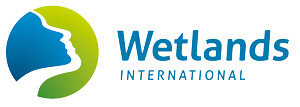by Taej Mundkur, Wetlands International

Management of wetlands and their biodiversity worldwide has been central to the aims of the International Waterbird Census (IWC) in all the world’s major flyways. Information generated through the census has enabled 5 million km2 of critical areas for waterbirds to be identified. The status of 871 waterbird species is regularly assessed using data from the census to support prioritising conservation action. The information also feeds into the IUCN Red List of Threatened SpeciesTM.
Recognising the alarming decline in wetland areas and many waterbird species in the East Asian-Australasian Flyway and the need to strengthen and expand the local and international networks of people engaged in waterbird monitoring, the East Asian Australasian Flyway Partnership Implementation Strategy 2012 – 2016 Outcome 6: requires that “Scientifically sound information is available on the flyway-wide status and trends of waterbird populations and their habitats”. It recognises that the Asian Waterbird Census, an ongoing regional waterbird monitoring programme “can continue to provide good information, the extent of their coverage is need of enhancement and related capacity building can improve the quality of the information”.
2016 marks the 50th count of the IWC as well as the 30th count of the Asian Waterbird Census. It is an important moment to celebrate the achievements of the global partnership of national and local agencies, organisations and individuals who volunteer their time and efforts as national coordinators and volunteers to collect the information.
Linked to this event, Wetlands International will launch a global campaign to inspire and promote action for the conservation of wetlands along the world’s flyways. We invite all governments, experts, organisations, companies and volunteers to work with us and step up efforts to conserve wetlands for waterbirds. All contributing activities will be connected and made visible through websites and social media.
We encourage all partners to support actions to increase:
• Knowledge: provide logistical support and resources to national coordinators and invest in training to strengthen local networks.
• Coverage: ensure monitoring of wetlands and waterbirds in January/February 2016 at EAAFP network sites, Ramsar sites, and other critically important wetlands, including remote sites, and support our efforts to identify and close gaps.
• Action: strengthen measures to manage and restore critically important wetlands and threatened species.
• Awareness: engage the private sector, students and wider public in wetland and waterbird conservation.
Wetlands International will stimulate action through:
• A Tool Kit and guidance relevant to all scales and flyways.
• Annual awards for outstanding contributions of governments, companies, NGOs, knowledge institutes and individuals, per flyway.
• Key events such as the 50th IWC count (in Jan/Feb 2016), World Wetlands Day (Feb), World Migratory Bird Day (May) and others.
We welcome active participation and support of the East Asian-Australasian Flyway partners and others in this campaign. For more information, kindly visit www.wetlands.org/IWC and contact iwc@wetlands.org.
To see the leaflet for the 50th IWC count, click here.




